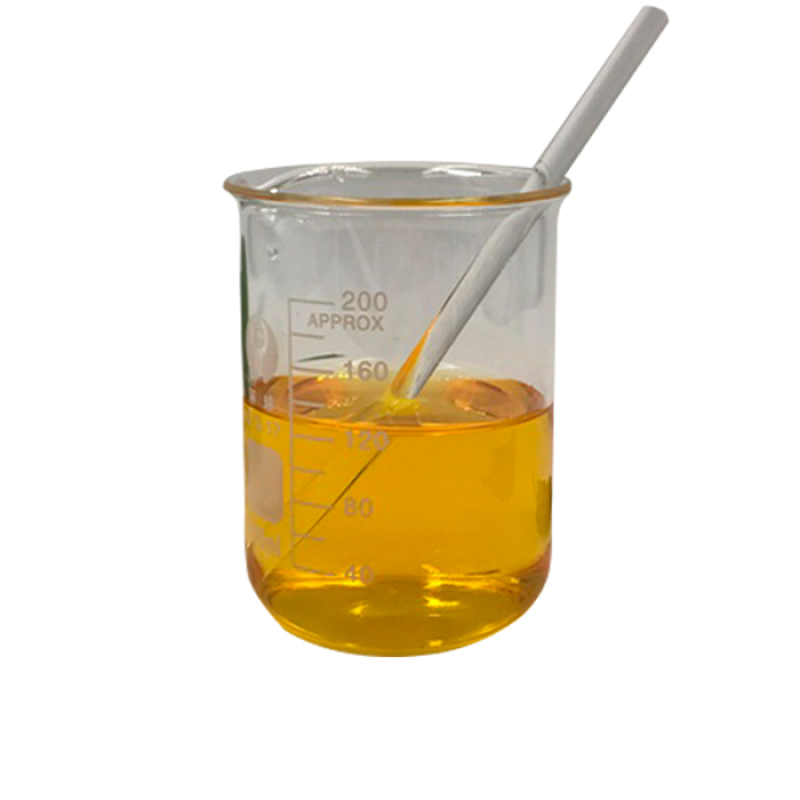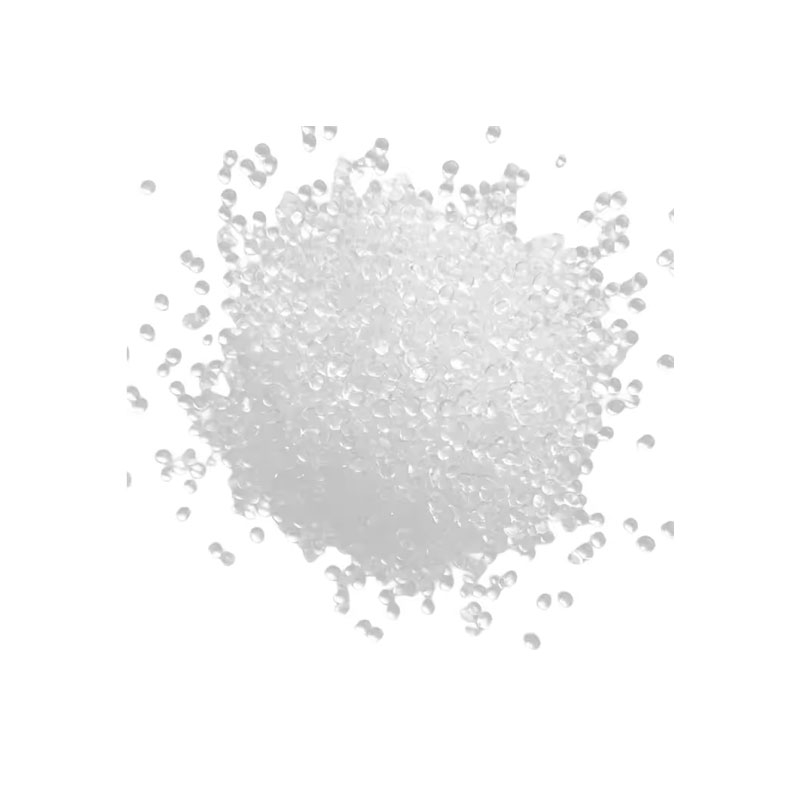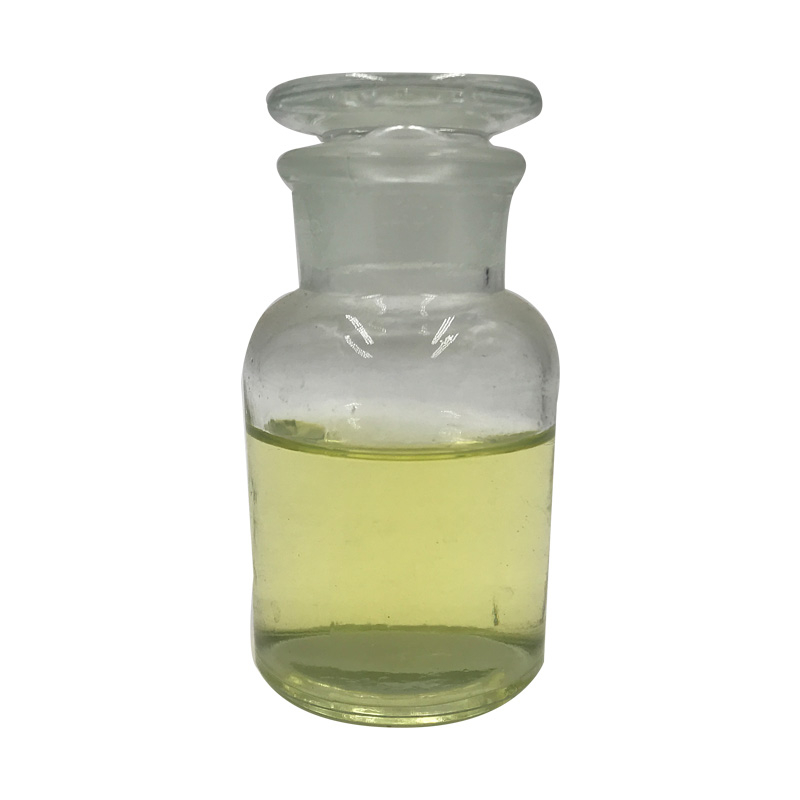Products Description of 2-Chloropyridine-N-oxideCAS#2402-95-12-Chloropyridine-N-oxide is an important compound in pyridine nitrogen oxides. It is an important intermediate for pesticides, medicines and daily chemical products. It is also an important intermediate for the synthesis of skin cleansers, shampoos and pyrithione and other antiseptic and antifungal fungicides. It is an essential raw material for the synthesis of 2-chloro-4-nitropyridine, an important intermediate for the synthesis of phenylurea plant growth regulators.
Contact Now
Products Description of Dibromomethane CAS#74-95-3Colorless or light yellow liquid.
Contact Now
Products Description of 1,3,5-Benzenetricarboxylic acid chlorideCAS#4422-95-1White powder1,3,5-Benzenetricarboxylic acid chloride Chemical PropertiesMelting point 32-38 °C (lit.)Boiling point 180 °C/16 mmHg (lit.)density 1.487 g/mL at 25 °C (lit.)refractive index 1.5945-1.5965Fp >230 °Fstorage temp. Store below +30°C.solubility decomposesform Liquidcolor Clear colorless to slightly yellowWater Solubility decomposesSensitive Moisture SensitiveBRN 2940936CAS DataBase Reference4422-95-1(CAS DataBase Reference)NIST Chemistry
Contact Now
Products Description of NICARBAZINE CAS#330-95-0Nicarbazin is a complex of dinitrocarbamide and hydroxydimethylpyrimidine. It is a yellow or yellow-green powder; odorless, with a slight odor. This product is slightly soluble in dimethylformamide, insoluble in water, ethanol, ethyl acetate, chloroform, and ether.
Contact Now
Paraffin, Liquid CAS#8012-95-1Mineral oil mist is a colorless, oily liquid aero-sol dispersed in air with an odor like burned lubricating oil.The odor threshold is 1.0 ppm. Specific gravity (H2O:1)=0.865 at 60℃; Boiling point = 250- 360*C; Vaporpressure = <0.5 mmHg at 20℃; Flash point= 193℃;Autoignition temperature = 260- 371℃. HazardIdentification (based on NFPA-704 M Rating System):Health 0, Flammability 1, Reactivity 0. Insoluble in water.Product Name:Paraffin, liquidSynonyms:PARAFFIN VISCID, EXTRA PURE, DAB, PH. EU R., B. P., PH.
Contact Now
Products Description of Nicarbazin CAS#330-95-0Nicarbazine is a complex of dinitrodiphenylurea and hydroxydimethylpyrimidine. It is a yellow or yellow-green powder; odorless, with a slight peculiar smell. This product is slightly soluble in dimethylformamide and insoluble in water, ethanol, ethyl acetate, chloroform and ether.
Contact Now
Products Description of Thianaphthene CAS#95-15-8Benzothiophene, molecular formula C8H6S. Molecular weight 134.19. White leaf-shaped crystals. Has the smell of naphthalene. Can volatilize with water vapor. Melting point 32℃, boiling point 221℃, 103~105℃ (2660Pa). Relative density 1.148432, refractive index 1.637437, UVλmax 227, 257, 288nm in ethanol.
Contact Now
Products Description of Phenol CAS#108-95-2Phenol, with the chemical formula 𝐶6𝐻5𝑂𝐻C6H6O, is a white crystalline substance known for its versatility and reactivity due to the hydroxyl group attached to the benzene ring. It serves as a key precursor in the synthesis of pharmaceuticals, including aspirin, and is integral to the production of resins, plastics, and synthetic fibers like nylon. Phenol's historical use as a disinfectant highlights its ability to denature proteins and disrupt cell membranes. It also plays a role in the detergent industry and analytical chemistry.
Contact Now
Products Description of 3,3'-Diaminobenzidine CAS#91-95-23,3'-Diaminobenzidine is a volatile fermentation product. It is now widely used in food as a food additive because of its special aroma. 3,3'-Diaminobenzidine has significant biochemical and toxicological properties, and its pleasant aroma may make people ignore its harm to human health. In addition, 3,3'-Diaminobenzidine is widely used in various research fields. It is currently mainly used as a monomer to prepare high-temperature resistant resins and fiber materials.
Contact Now
Dimethylolurea Chemical PropertiesMelting point 125 °C (dec.)(lit.)Boiling point 224.08°C (rough estimate)density 1.34refractive index 1.4610 (estimate)Fp 100 °Cstorage temp. 2-8°Cpka12.14±0.46(Predicted)form powder to crystalcolor White to Almost whiteWater Solubility 150 g/LMerck 14,6968BRN 1811870InChIKeyQUBQYFYWUJJAAK-UHFFFAOYSA-NLogP-2.610 (est)CAS DataBase Reference140-95-4(CAS DataBase Reference)NIST Chemistry ReferenceDimethanolurea(140-95-4)EPA Substance Registry SystemDimethylolurea (140-95-4) Safety InformationHaz
Contact Now
Products Description of 2-Lodothiophene CAS#3437-95-42-Lodothiophene is a colorless liquid with a melting point of -40°C and a boiling point of 80-81°C (2.67 kPa).2-Lodothiophene CAS#3437-95-4 Chemical PropertiesMelting point -40 °C (lit.)Boiling point 73 °C/15 mmHg (lit.)density 1.902 g/mL at 25 °C (lit.)refractive index n20/D 1.651(lit.)Fp 160 °Fstorage temp. 2-8°Cform LiquidSpecific Gravity1.902color Clear yellow-green to red-brownSensitive Light SensitiveBRN 104666InChIKeyROIMNSWDOJCBFR-UHFFFAOYSA-NCAS DataBase Reference3437-
Contact Now
Products Description of 2-Chlorophenol CAS#95-57-8 o-Chlorophenol is a colorless to yellow-brown liquid, m.p.8.7℃, b.p.175℃, n25D 1.5565, relative density 1.265.
Contact Now
1H-Benzotriazole CAS #95-14-71H-Benzotriazole is prepared by the reaction of o-phenylenediamine with nitrous acid in dilute sulfuric acid. Damschrodner and Peterson were able to synthesize the 1H-benzotriazole in a high yield (80%) by nitrosation of o-phenylenediamine with sodium nitrite in glacial acetic acid and water.1H-Benzotriazole is an anticorrosive agent, which is useful in aircraft deicing and antifreeze fluids. It is also employed in dishwasher detergents.
Contact Now
Products Description of Trimesic acid CAS#554-95-0Trisproic acid is in the form of white to slightly yellow crystalline powder. Solubility: easily soluble in ethanol, soluble in ether, and soluble in 40 parts of water at 23°C.
Contact Now
Products Description of Piperonyl butoxide 95% CAS#51-03-6Synergyl ether can improve the insecticidal activity of pyrethrins and various pyrethroids, rotenone and carbamate insecticides. It can also improve the insecticidal activity of fenitrothion, dichlorvos, chlordane, triclofenac and atrazine. etc. have a synergistic effect and can improve the stability of pyrethrum extract. When house flies are used as the control object, this product has a higher synergistic effect on permethrin than octachlorodipropyl ether; however, it cannot synergize cypermethrin in knocking down house flies.
Contact Now
Products Description of Sodium 4-amino-1-naphthalenesulfonate CAS#130-13-2White or off-white flaky crystals. Easily soluble in water, soluble in 95% ethanol, insoluble in ether, slightly soluble in concentrated caustic alkali aqueous solution and ethanol solution. It is an important azo pigment intermediate, widely used in the synthesis of direct dyes and reactive dyes.
Contact Now
N-B-HYDROXYETHYL OLEYL IMIDAZOLINE CAS#95-38-5It is widely used in the process of oil and natural gas extraction, gathering and transportation, and in the atmospheric and vacuum, catalytic cracking, hydrofining, hydrocracking and other devices of refineries to prevent corrosion of metal equipment.
Contact Now
Products Description of 2-CHLORO-3-METHYLPYRAZINE CAS#95-58-92-CHLORO-3-METHYLPYRAZINE is a chemical. CAS No.is 95-58-9.Molecular Formula is C5H5ClN2.2-CHLORO-3-METHYLPYRAZINE Chemical PropertiesBoiling point 80 °C(Press: 27 Torr)density 1.234g/mlstorage temp. under inert gas (nitrogen or Argon) at 2-8°Cpka-0.31±0.10(Predicted)form Liquidcolor ColorlessLogP1.058 (est)CAS DataBase Reference95-58-9(CAS DataBase Reference)EPA Substance Registry SystemPyrazine, 2-chloro-3-methyl- (95-58-9)Safety InformationHazard Codes XnRisk Statements 22-37/38-41Safet
Contact Now
Phenol CAS# 108-95-2 Phenol is the easiest member of a classification of natural compounds possessing a hydroxyl team connected to a benzene ring or to a extra complicated fragrant ring system.Also recognized as carbolic acid or monohydroxybenzene, phenol is a colorless to white crystalline fabric of candy odor, having the composition C6H5OH, bought from the distillation of coal tar and as a derivative of coke ovens.Phenol has extensive biocidal properties, an
Contact Now
Products Description of N-LAUROYL-L-GLUTAMIC ACID CAS#3397-65-7N-(1-oxododecyl)-L-glutamic acid (9CI) is a chemical whose English name is L-Glutamicacid, N-(1-oxododecyl)-.N-LAUROYL-L-GLUTAMIC ACID Chemical PropertiesMelting point 95-96 °CBoiling point 543.6±40.0 °C(Predicted)density 1.081±0.06 g/cm3(Predicted)storage temp. Sealed in dry,Room Temperaturesolubility Aqueous Base (Slightly), Chloroform (Slightly)form Solidpka3.46±0.10(Predicted)color White to Off-WhiteLogP2.964 (est)EPA Substance Registry SystemL-Glutamic acid, N-(1-oxododecyl)- (3397-65-7)
Contact Now
Products Description of Decyl glucoside CAS#68515-73-1Decyl glucoside is a new type of nonionic surfactant alkyl polyglycoside (APG).
Contact Now
Petroleum resins CAS#64742-16-1Petroleum resins is a complex combination of organic compounds, predominantly hydrocarbons, obtained as a fraction of the extract from solvent extraction of residuum.
Contact Now
Products Description of Styrenated phenol CAS#61788-44-1Light yellow to amber viscous liquid.
Contact Now
Products Description of 1-Chloroisoquinoline CAS#19493-44-81-Chloroisoquinoline can be used as a pharmaceutical synthesis intermediate, such as the preparation of the compound 1-phenylisoquinoline.
Contact Now



































